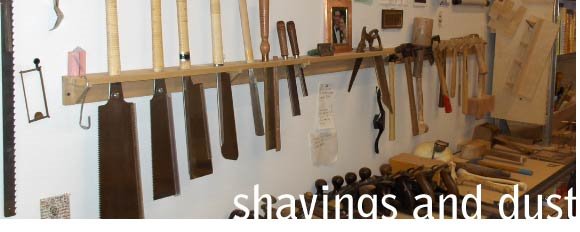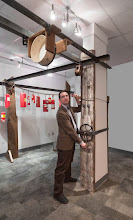So when you are talking about visiting Japan and if you are going to be anywhere near Kyoto, you visit Kiyomizu-dera. If you are in Japan and you are at all interested in wood and wooden structures, you make a point to go to Kyoto so you can see Kiyomizu-dera.
So we went yesterday to Kiyomizu-dera, obvs.
Built in the early 1600s, Kiyomizu-dera is a Buddhist temple built on the side of the incredibly steep mountains that surround Kyoto. The temple is built around a waterfall ("Kiyomizu" means "clear water" in Japanese), and the washing of your hands and drinking the water from the waterfall is supposed to have wish-granting powers. And maybe it does.
The approach to the temple is through some very old streets (and by old I mean old in a way that we don't have a context for in this country) small and winding and so picturesque that it kind of hurts. Lots of beautiful wabi-sabi, lots of beautiful wood work, some pretty great stone work, and all impeccably clean. So clean that it looks like a 1950's movie set, like we are somehow in a Japanese version of "Singin' in the Rain" but with the singing or the rain. Or Gene Kelly.
So up the side of the mountain we trek, and the temple slowly reveals itself to us. The first thing that you take in is the crowds. Thousands of school children, mostly middle schoolers, each in their school uniform and all wearing matching bright yellow or red or blue hats, pushing and laughing and talking in the way that middle schoolers everywhere do. Comforting to know that some things about being human are constant. And they are all on field trips, apparently, to see the temple. The nice thing about being in crowds of middle schoolers is that you can still see everything, because they are mostly still short, you know. So there is this swirling tide of yellow and blue and red caps at about nipple height, but you can still see all the things you want to see. Which is nice.
As you pass the torii gate and go into the temple complex itself, you become aware of the timbers.
Well, I become aware of the timbers. Because the thing about Kiyomizu-dera is that it is built with out nails. It is all timber-framed joints, all fit so carefully that in general you can't slide a piece of paper into the joints. And these are no 12" x12" timbers like one might see in the kind of timber-framed structures that I have been in, these are massive columns, 24" round. It really is quite stunning to be in front of. I have to work very hard to keep the sides of my mortices straight in a 2" thick table top, the kind of precision required to cut a tight mortice through a column of that size really gave me pause.
As soon as I walked inside I heard an inconsistent beautiful low gong being rung. The practice in temples is that one makes an offering, then makes a prayer to the Buddha, then rings a bell. I have been told that the idea is that the bell wakes up the god and reminds them to grant your prayer, but I don't know if that is true or not. Maybe. I kind of like the idea of the god snoozing away and being startled awake by the bell. He rolls over, grumpily waves his hand to grant your prayer, and then drifts back off to sleep with a snort. It's a nice image, and I like the way that ringing the bell punctuates the acts for the devotee. Nice to have that kind of theatrical button on one's prayer-making. Not sure I would want my prayer granted by someone who just woke up, though. I tend to be grumpy and clumsy. You might pray for a new car and get one because yours gets totaled with you in it, you know what I mean? Clumsy prayer-granting. And that may not even be the reason to ring the bell.
 But this bell, holy cow. It is a massive bronze bowl, maybe 42" in diameter at the rim, and it is struck with a rope-wrapped (say that five times fast. Bet you can't) mallet. And the sound is unbelievable. Low and long, with lots of sustain. I stood there for a while and just listened to it be rung and enjoyed the hell out of it myself. I wanted very badly to ring it, but I did not feel right doing so. I am sure thousands of non-Buddhists ring it every year, but it felt disrespectful. So I stood and listened for a while and let the incense waft over me there in the mid-gloom of this five hundred-year-old wooden structure. The sound of the middle schoolers outside swirled around me like the incense, more intense at time and less intense at times. The bell gonged intermittently, and the growing heat of the day made the wood smell just amazing. What a lovely place. When it is quiet and free of people I can only imagine that it is serene in the extreme.
But this bell, holy cow. It is a massive bronze bowl, maybe 42" in diameter at the rim, and it is struck with a rope-wrapped (say that five times fast. Bet you can't) mallet. And the sound is unbelievable. Low and long, with lots of sustain. I stood there for a while and just listened to it be rung and enjoyed the hell out of it myself. I wanted very badly to ring it, but I did not feel right doing so. I am sure thousands of non-Buddhists ring it every year, but it felt disrespectful. So I stood and listened for a while and let the incense waft over me there in the mid-gloom of this five hundred-year-old wooden structure. The sound of the middle schoolers outside swirled around me like the incense, more intense at time and less intense at times. The bell gonged intermittently, and the growing heat of the day made the wood smell just amazing. What a lovely place. When it is quiet and free of people I can only imagine that it is serene in the extreme.As amazing as the temple is, the real money is underneath. The porch of the temple is about forty feet off of the ground because of the extreme slope of the hill, and there is a famous (well, famous to me, anyway) lattice work of beams and columns that hold it up. All timber-framed, all hardware free. It is unbelievable. The amount of effort and time that it took to get those beams there and marked and cut and fitted beggars definition. The hands and minds and work of a lot of woodworkers went into making that happen, and I was gobsmacked to be finally standing in the presence of all of that. Talk about a holy place. It is a monument to working with our hands, to what humans can do when they have a mind to. We can accomplish pretty incredible things when we work together.
As I stood there with one of my students, he asked how old the temple was, which was hard to answer. In the states, we have ideas about originality, and what identity means for objects that is different here. The Shinto Ise Jingu shrine, for example, is rebuilt every 20 years as a testament to death and rebirth, and as a way to train temple builders. But if you ask the priest how old the temple is, he will say it was built in 4 BCE. It is rebuilt in exactly the same way every time, using the same methods and the same type of wood, so it is the same exact shrine, if you see what I mean. Not a new one built on the same plot of land in the same way, but the same shrine. Interesting way of looking at it. Brings to mind all kinds of questions about "thingness," and what the identity of a thing is, and how we judge that.
So answering my student about the age of Kiyomizu-dera becomes tricky, you see. On display there were some chunks of what were clearly old beams that had been replaced. I could not read the signage, but it clearly said something like "This used to be a part of this temple and we replaced it." So the actual beams may not be as old as the 1630's. But then the Japanese will say unequivocally that yes, this temple was built in the 1630's, and who am I to say they are wrong? After all, what matters here? When it was built? How it was built? Why it was built? Hard to say. What really matters, I suppose, is that it was built, and that we can come here to see it and hear it and smell it and generally be given a moment to pause and reflect on the human condition and our role in the world and where we feel our energy would be best used.
 |
| Middle Schoolers doing what they do best on a field trip: Making noise and running around. |
 |
| This used to be a part of the temple. You can see the chisel marks on the bottom of that mortice. Humbling. |
 |
| This is the sign above that old chunk of beam. I think it says something like "This beam used to be a part of the temple but we replaced it." |
 |
| A holy sight worthy of a pilgrimage. |
 |
| Little roofs on the beams protect them from weather. |
 |
| The clear water waterfall that gives the temple its name. Tastes pretty good. And wish was already granted, because I am here. So the wish-granting thing works, obviously. |





No comments:
Post a Comment